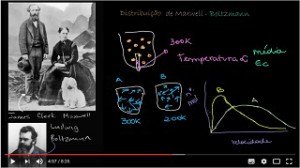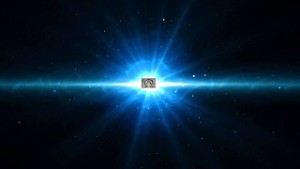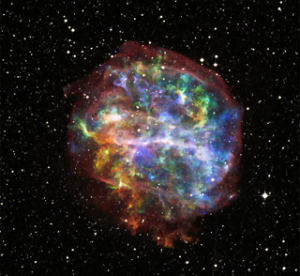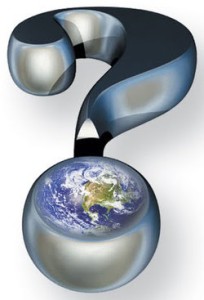
Arquivo para a ‘Information Philosophy’ Categoria
Consciousness and information
The EBICC event receives today (October 31) the lecture by Gregory Chaitin, mathematician and computer scientist who re-presented Gödel’s Incomplete Theoremis considered to be one of the founders of what is today known as Kolmogorov (or Kolmogorov-Chaitin) complexity together with Andrei Kolmogorov and Ray Solomonoff. Today, algorithmic information theory is a common subject in any computer science curriculum.
mathematician and computer scientist who re-presented Gödel’s Incomplete Theoremis considered to be one of the founders of what is today known as Kolmogorov (or Kolmogorov-Chaitin) complexity together with Andrei Kolmogorov and Ray Solomonoff. Today, algorithmic information theory is a common subject in any computer science curriculum.
Abstract:
He make a review applications of the concept of conceptual complexity or algorithmic information in physics, mathematics, biology, and even the human brain, and propose building the universe out of information and computation rather than matter and energy, which would be a world view much friendlier to discussions of mind and consciousness than permitted by traditional materialism.
The foundations of his thinking is showed in the book: Meta Math!: The Quest for Omega (Pantheon Books 2005) (reprinted in UK as Meta Maths: The Quest for Omega, Atlantic Books 2006.
A constant and a possible Nobel of Physics
Constantino Tsallis (1943-), of the Santa Fe Institute is a Greek who is in Brazil,  and is a candidate for the Nobel Prize in Physics this year, he also has brazilian and arngetine nationalities, as he likes to say: “he and the fans of Flamengo (big soccer club in Brazil) hope for this Nobel of Physics “.
and is a candidate for the Nobel Prize in Physics this year, he also has brazilian and arngetine nationalities, as he likes to say: “he and the fans of Flamengo (big soccer club in Brazil) hope for this Nobel of Physics “.
He reworked Boltzmann’s constant to the point of making it more generic, more applicable, and about to change its name (or create a more general constant) called Tsallis.
The Boltzmann constant (k or kB) is the physical constant that relates temperature and energy to molecules, kMols as we have learned (or not) in physics classes.
The name is due to the Austrian physicist Ludwig Boltzmann (1844-1906), who made the most important contributions to statistical mechanics (even being considered its founder), in which its constant has a fundamental role. Its experimental value, in SI units, determined in 2002, is:
K = 1.3806503. 10 ^ -23 J / K
The simplest way to arrive at the Boltzmann constant is to divide the constant of the perfect gases by the constant of Avogadro.
But the contribution does not stop there, the most important concept that comes from physics is that of entropy, and together with Maxwell (although they have never worked together), they constituted what is called the Maxwell-Boltzmann distribution to visualize the particle velocity distribution At different temperatures.
Constantine Tsallis, a Greek-American physicist who currently works in Brazil, in reviewing Boltzmann’s constant, he says only for the beauty of the equations,
Formulated in 1988 by Constantine Tsallis as a basis for generalizing standard statistical mechanics, it can be said almost to refound, it is a generalization of the Boltzmann-Gibbs Entropy, since Gibbs’s Particullah has recently been confirmed experimentally and is also a fundamental result For Standard Physics.
The physical relevance of Tsallis ‘theory is already widely debated in the world of physical literature, but it has been only in the past decade that researchers have shown that Tsallis’ mathematics more accurately describes power law behaviors in a wide range of phenomena, The turbulence of fluids to the fragments created in the collisions of high-energy particles.
Constantino Tsallis is a candidate for the Nobel of Physics and will attend the EBICC on EBICC da USP-SP-Brazil.
Trust, faith and autonomy
As Giddens has established, there is a boundary between faith and trust, but inevitably those who have confidence will need some kind of faith to increase their security and thus their autonomy, without it drifting towards individualism or isolationism.
inevitably those who have confidence will need some kind of faith to increase their security and thus their autonomy, without it drifting towards individualism or isolationism.
It is then possible to qualify the faith, let us turn to the mystics, and as Western-Christian civilization the figure of Jesus, the passage in which he walks on the waters scaring his disciples who think he is a ghost, is very illustrative and can tell us something of faith , so there is Matthew 28 to 30:
Then Peter said to him, “Lord, if it be you, let me go to meet you, walking on water.”
And Jesus answered, “Come!” Peter got out of the boat and began to walk on the water toward Jesus.
But when he felt the wind, he was afraid and, beginning to sink, cried out, “Lord, save me!”
Even one of his main disciples after finding him to be a ghost, recognizes him and wishes to walk on the waters sinks, lacked confidence, faith and mainly autonomy.
The fact that followers of various mystical currents have little autonomy makes them a little childish, and dependent on almost everything of the master, that is why the master often dies, the disciples die, but Jesus did not die … it is another story, And it will take another kind of faith, though many proclaim the living God, present him dead.
An important qualifier for faith and his twin sister hope, and both are daughters of love, then faith must originate from something that is love, must distribute the trust and the desired good with other people and the environment, to Makes it “trustworthy” then this kind of faith is not blind, but a faith that has an “agapic act” that heals the environment.
The fact that the vast majority of religious groups function as closed systems and do not provide the environment with a sensible improvement, first in relationships and then in actions, and finally in faith; Is that it makes them a minefield of prejudices and evil, they want to be heard as masters, but they are small in listening and opening.
Walking on the water, the metaphor most often used is to say that it is a world that is agitated and agitated by injustice and lack of love, should not oppose an active and deep inner faith.
Trust those who have faith, but faith must come from a soul open to the world and to others.
An unexpected philosophy
We have already spoken of a post on the issue of non-transparency raised by Habermas in an article, and we also briefly quoted the author of the Society of Transparency, Byung-Chul Ham, but now upon receiving the book and opening it I come across an unexpected philosophy, Profound though not finished as any postmodern, but Heideggerian and humanist discourse.
Habermas in an article, and we also briefly quoted the author of the Society of Transparency, Byung-Chul Ham, but now upon receiving the book and opening it I come across an unexpected philosophy, Profound though not finished as any postmodern, but Heideggerian and humanist discourse.
He sees the question of transparency from a new angle, typical of his Eastern culture, reveals the issue with a capital phrase: “I refer to transparency only to corruption and freedom of information are unaware of its size” (Han, 2017, p. 12).
He reveals it as violent on the following page: “The coercion of transparency levels man himself until he becomes a functional turning point in a system. Such is the violence of transparency. “(Page 13)
It reveals immediately why we are victims of this new anathema of modernity: “spontaneity, what is the record of a happening and freedom, traces that constitute life in general, do not carry anything transparent” (idem), and quoting von Humboldt Explains: “… and it would be to attempt against the historical truth of its origin and its transformations to want to banish from it the possibility of these inexplicable phenomena” (Humbold apud Han, page 13).
It does not fail to point out ways, which we have already drawn here for various occasions of otherness, but presents it in a new dress, opposing the society of transparency that does not “allow information or vision gaps”, explains that in the German language “gap” ( Lücke) and “luck” (Glück), citing R. Sennet in his “Respect in a World of Inequality”.
He makes a new phrase suddenly strong: “Love without a gap in vision is pornography,” theme that will return and theme from another book of his “The agony of eros”, another sure theme of this time.
But it does not give this a shallow explanation, affirms that this “positive society” affirming that this society is neither hermeneutic nor dialectical, but “a society that does not admit any negative feeling” (page 16), does not do this But it is my reflection that this is the Platonic function of contemporary idealism.
He affirms that this positive society is not the cause, “but the consequence of an end of the theory (the author’s emphasis), in the authentic sense, which is closer. The theory cannot simply be replaced by positive science “(page 17), in clear reference to the appeals of practicality of contemporary pragmatics.
It then appears in this plan, while pointing out the path that politics draws in this ideal-positive perspective, “Politics is strategic action (again the author’s emphasis). And for this reason, there is a secret sphere of its own. Full transparency paralyzes it “(page 18).
I stop here the analysis, because it is not possible in this space to point out the new paths that the author trails, but only at the beginning of the first chapter can we see the breadth of his analysis.
Twitter will compensate use of Periscope
A reaction from Twitter’s Periscope, which allows YouTube videos to be streamed on microblog,  YouTube’s Alphabet competitor that has released live video streams to mobile devices with users of more than 10,000 followers, can leverage digital currency compensation using apps .
YouTube’s Alphabet competitor that has released live video streams to mobile devices with users of more than 10,000 followers, can leverage digital currency compensation using apps .
In 2015 when Twitter launched Periscope, the growth of broadcasts was progressive, according to the company the volume reached 77 million hours of live videos in the first three months of 2017, high volume, but there is no information on views. Alphabet’s YouTube Alphabet, in addition to the requirement of more than 10,000 followers, has expanded its own offer to help online artists make money, but Twitter wants to compensate ordinary users, but fan fees for artists only.
However the digital monetization of these systems could affect the use of digital currency, leveraging it for other services. How to leverage business?
According to The Verge, Periscope will allow tags to be added to the application’s custom hearts in real-time streams, alongside the normal multicolored hearts that appear when the viewer presses the usual “like” button.
The first American franchise is Fast and Furious, with “like” adding its “F8” colored logo, other brands will be able to use, the service for the moment only in the USA can arrive soon here and other countries.
Substance of the universe: the Sacred Corpus
Contrary to what is supposed, substance is that which is permanent in things that change, and therefore the foundation of every accident, and everything is changing in the universe then what is the primordial substance, what is the genesis of the whole universe?
change, and therefore the foundation of every accident, and everything is changing in the universe then what is the primordial substance, what is the genesis of the whole universe?
Interpretations can be divided into three streams: there are those who recognize only one substance (monist) stand out Spinoza and Leibniz, those who recognize two substances (dualists) that is the foundation of modern idealism, or the most common are the pluralists, The “pure” currents that come from Platonism and Aristotelianism.
All that exists is to be monistic and pluralistic, then the being is constituted of a plurality of elements that ground it as substances, but for these they can be hierarchized ontologically, for monists there is only a hierarchy that is the initial monad in the interpretation of Spinoza and Leibniz is God, in the conception of modern science, a corpuscle of electromagnetic concentration where the Big Bang occurred.
There are those who contest the Big Bang, Oxford philosopher Nick Bostrom said, “The probability of us living within a simulation is close to 100%,” something like the Matrix, but to deny the substantiality of the universe is to deny apodic evidence That is accepted without demonstration).
The philosopher Franz Brentano has regained a category of scholasticism called intentionality, to define what is consciousness as that which is directed to something, his student Edmund Husserl used it to define consciousness as something intentional.
If we think so, but important that the universe exists, and it has its substantiality (its corpus), is that something or someone had intentionality of this first object, that is, created it in a “conscious” way and call it what it wants, He is a Being because he exists.
If we admit its materiality, even light can be observed in its influence on a gravitational body (see our post on NASA’s observation), even the existences of man can be demonstrated in its evolution now we know of over 300 thousand years, we must Admit substantiality, and consider the idea of the initial monad as plausible, then there is a “body” formed of this original, conscious Being.
Teilhard Chardin, a paleontologist and Jesuit priest, considered the entire universe the Body of Christ, more than a mystical body, a substantial cosmic body, if anything is made of this universe, it is stored in its source and initial primary consciousness;
The apodic evidence we need to admit of a Divine Corpus, alpha and omega, beginning and end, may need little to be admitted, but in the absence of this, there remains what we call faith, never blind, nor contrary to reason,
Crisis, thins and nothingness
The crisis, the things and the nothing now separate with the things, and asks the  essential question: between the things exists the nothingness?
essential question: between the things exists the nothingness?
Should not someone who had been unaware of it make the false ask not to ask about Being rather than about things and nothingness? Yes our philosopher will clarify this, but modernity poses the question of the relation between things and in it arises the dualism of separation between things.
Mário Ferreira explains that “Scholastics like Thomas Aquinas who follow the Aristotelian line affirm that time and space are entities of reason (entia rationis), but founded on things grounded in re [thing], for there are things between distances And to succeed, which allow us to generalize the schemas of experience, until we form the abstract concepts of time and space, which modern rationalism has totally separated from facts, emptying them from them, which are given in them “(page 32)
He clarified that space and time will be fundamental concepts for modern thought: “but emptied of all factual content, are conceptual entities whose content implies the stripping away of everything that happens factually …” (idem). In order to analyze these schemes Mario Ferreira uses psychogenesis, because he will say that the fact that the schemas are constructed, by experience, a posteriori will refer in the Kantian schema according to its psychogenesis, the existence of a priori positivity, “which is undeniably a positivity of the Kantian thought. “(Idem) Then he will ask the essential question about nothingness: “if things take place in space and they separate, as the limit reveals it, space is interposed between them. But what space? ” Here it separates according to the model of Democritus in there is an emptiness between the things and the one of Lorentz, a full space. Also at the beginning of modernity Leibniz proposed the monadology.
We are, therefore, between two affirmations (page 33), one affirming the presence of nothingness, of an absolute absent, and another affirming the presence of being, in which there are no interstices or frontiers, because it fills everything, and this psychogenesis creates ” A scheme of relationship of things, without being given a real presence, per se. “(Idem).
So this is tension, not dualism, between nothingness and being, or if we prefer the separation between things and the relation between them, the former is rationalist and “it is a worsening of the crisis.”
Discovering the relation between the finite that “finitude can only be given where there is something, because it allows to measure. Nothing is immeasurable, nothingness would be an abyss without end. “(Page 34)
In a footnote, he clarifies: The impossibility of an absolute nothingness, between islands of being, is demonstrated by us apoditically (by evidence), in Concrete Philosophy.
The important point of this argument is that through it one can affirm “the eternal presence of being, in which we are immersed and that sustains us, which allows us to communicate …” (page 35) and then the crisis is not so Deep, it has degrees, says our brazilian philosopher.
SANTOS, Mario Ferreira dos. Filosofia da crise, São Paulo: É realizações, 2017.
Crisis, the limites and the know
We are reading Mário Ferreira dos Santos, and at the end of the first chapter  of the “Philosophy of Crisis”, points out that we are aware of the limit that exists with the Other and the nodes, to point 5 points of this separation before plunging into what is nothingness Between things (and beings).
of the “Philosophy of Crisis”, points out that we are aware of the limit that exists with the Other and the nodes, to point 5 points of this separation before plunging into what is nothingness Between things (and beings).
On this separation, he affirms that “things also suffer from their limits, but quiet, intrinsically silent, even before themselves, because in them, there is no one who peers at himself. “(Page 20)
We are aware of the crisis, things also suffer separation, and the crisis worsens “if we accept this separation as irremediable, an insurmountable abyss, drawn between us and others,” the fourth limit is that of individuality, that of others Philosophers, and from this originates the fifth limit: “from the self before the limit of individuality.” (Page 29)
“And there is in us something that always puts beyond all our knowledge, something that we know, always distant, always more and more distant, that marks a presence always separates from everything that we delimit, since knowing is always delimiting? “(Page 29) ends the long reflection on separation and crisis with a central cognitive question.
It is something like the philosopher Ludwig Wittgenstein (1889-1951) affirmed: “knowledge is an island surrounded by an ocean of mystery. I prefer the ocean to the island, “to indicate that the crisis is most often a go beyond, and penetrate the ocean of mystery
The chapter on the concept of the crisis ends with two observations: “between the limits of all our knowledge, is there not always something in us that knows, that conquers them, because it does not allow them to be apprehended? And that always separates, distant, always the same? “(Page 30), and that even in crisis,” there is also a point of a victory that we live in us. “(idem)
He ends the chapter with hope: “Therefore, there is no reason not to despair. But we must find the promised way. “(Idem).
SANTOS, Mario Ferreira dos. Filosofia da crise, São Paulo: É realizações, 2017.
Epistemology and crisis of thought
The British philosopher David Hume, in the eighteenth century, writes in the Treatise on Human Nature, a questioning of induction as a valid mechanism for scientific discovery, was the part of this question that Karl R. Popper in The Logic of Scientific Research by Karl R Popper (1902-1994), brought the “novelty” in the philosophy debate of science by repeating the Humean idea.
Treatise on Human Nature, a questioning of induction as a valid mechanism for scientific discovery, was the part of this question that Karl R. Popper in The Logic of Scientific Research by Karl R Popper (1902-1994), brought the “novelty” in the philosophy debate of science by repeating the Humean idea.
The problem formulated by Popper was based on the separation of metaphysics (pseudoscience) and true science, “empirical science”, but Thomas Khun (1922-1996) in The Structure of Scientific Revolutions Will question this.
The history of science would already demonstrate this, that is, that periodically, one paradigm was replaced by another, although this is not by a simple observation incompatible with the theory, as it attested the principle of the falsperabilidad popperian, what happens is a change of Thought, he quotes Copernicus, but Heisenberg with the quantum principle and Albert Einstein with the Theory of Relativity are more general.
The Hungarian mathematician and philosopher Imre Lakatos (1922-1974) followed Popper’s ideas and the principle of falsifiability by softening it: the history of science would demonstrate that theories were never completely abandoned, even when refuted.
Paul Feyerabend (1924-1994) developed a radically innovative argument in his work suggestively titled Against Method, stating that there was never the possibility of establishing objective criteria for the evaluation of scientific theories. Denying the whole method of logical positivism, which defended a unique methodological standard.
However, this crisis has already deepened, we have already mentioned Edmund Husserl, who looked at the crisis of the European sciences in the development of his phenomenology, among several statements we find: “With the awakening of the reflection of the relation between knowledge and the object, abyssal obstacles . Knowledge, the most obvious thing in natural thought, suddenly appears as a mystery, “and will have between notable later influences like Heidegger and Gadamer, who take up the ontological question, where consciousness is essential.
The Portuguese sociologist Boaventura de Souza Santos, in his writing A discourse on the sciences, revalues the controversy introducing that the attenuation of the distinction between organic and inorganic, human and nonhuman would be useless, but the question of the conscience is not touched.
Edgar Morin, H.G. Gadamer, Lévinas and Ricoeur, and other contemporary thinkers agree that it takes a turn in thought, wrapped in complexity and experiences
Epistemology and the humanities
From the middle of the nineteenth century until the beginning of the twentieth  century, the human sciences lived a real transformation in the search for an alternative to the epistemological foundations of scientific knowledge, since the old “positivist” and “naturalist” models were in check.
century, the human sciences lived a real transformation in the search for an alternative to the epistemological foundations of scientific knowledge, since the old “positivist” and “naturalist” models were in check.
Dilthey, Schleiermacher’s successor who proposed the hermeneutic method, sought philosophical foundations for an epistemology of scientific knowledge, thus said: “The sciences that have the socio-historical reality as their object of study seek, more intensely than before, the systematic relations between They and their foundations.” (DILTHEY 1989, p.59).
Gadamer will differentiate parity with the natural sciences with the human sciences (Geistewissenchaften), proposing that what occurs with an artistic interpretation, is different from reading, because “Reading, distinct from a ‘recital’, does not stand for itself Same; It is not an autonomous update of a thought pattern but remains subordinate to the text restored by the reading process. “(GADAMER, 2012, p.11).
The ideal model is romantic, as called by Gadamer, and deals with consequences for epistemology, for “Its ideal is to decode the Book of History. This is the method by which Dilthey hopes can justify self-understanding of the interpretive sciences and their scientific objectivity. “(Idem)
Just as texts have a “pure sense,” so history would have it, in Gadamer’s analysis, however, “their self-understanding of the sciences is not” truly consonant with their fundamental position in terms of Lebesphilosophie.” (Life) (GADAMER, 2012, p.12).
It clarifies that it is always “in the connection between ‘life’, which always implies consciousness and reflexivity (Besinung), and ‘science’, which develops from life as one of its possibilities” (idem).
Thus, the clear epistemological implication: “The human sciences thus acquire a ” ethical ” valence that could not remain without consequences for their methodological self-understanding.” (Idem)
Thus the human sciences “are closer to human self-understanding than the natural sciences. The objectivity of the latter is no longer an ideal of unequivocal and binding knowledge. “(Idem).
He will seek in Nicomachus ‘Ethics the lost foundations, when in the sixth book Aristotle distinguishes: “From theoretical and technical knowledge the mode of practical knowledge he expresses, in my view, one of the greatest truths that allow Greek thought to bring to light the’ Mystification ‘of modern society in which specialization reigns. “(GADAMER, 2012, page 13).
References:
DILTHEY, W. Introduction to the Human Sciences. Ed. By R. A. Makkreel & F. Rodi; Trad. Michael Neville. New Jersey: Princeton University Press, 1989.
GADAMER, H.G. The problem of historical consciousness, (Brazilian edition) 3rd. Edition, 3rd. Reprint, Rio de Janeiro: Fundação Getúlio Vargas, 2012.

